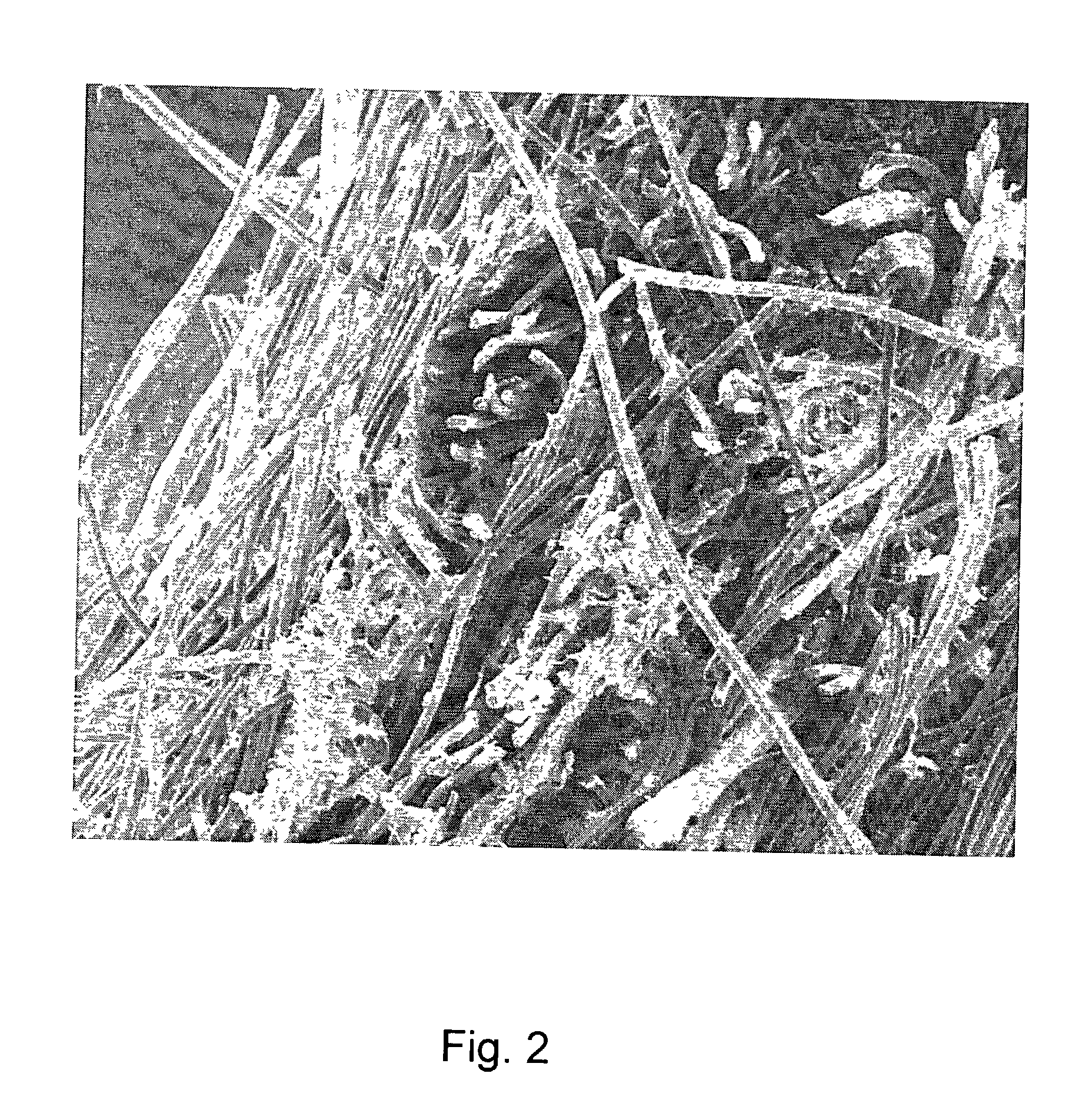Hybrid biologic/synthetic porous extracellular matrix scaffolds
a porous, extracellular matrix technology, applied in the field of extracellular matrix and scaffolds, to achieve the effect of facilitating host cell proliferation, supporting, and stabilizing a wide variety of anatomical defects and traumatic injuries
- Summary
- Abstract
- Description
- Claims
- Application Information
AI Technical Summary
Benefits of technology
Problems solved by technology
Method used
Image
Examples
example 1
[0049] An aqueous suspension of SIS ("slurry") is made, of approximately 8 mg dry weight of comminuted SIS material per mL of water. The slurry is placed within a beaker on a stirring plate for approximately 3 minutes to ensure that the SIS is evenly dispersed in the suspension.
[0050] A polymer solution of 95:5 weight ratio solution of 60 / 40 PLA / PCL is made and poured into a flask. The flask is placed in a water bath, stirring at 60-70EC for 5 hrs. The solution is filtered using an extraction thimble, extra coarse porosity, type ASTM 170-220 (EC) and stored in flasks.
[0051] An equal amount of the polymer solution is added to the SIS slurry, to form an SIS / polymer mixture. The mixture is stirred on a stirring plate to make sure that the SIS and polymer are evenly dispersed in the suspension.
[0052] The porous scaffolds are obtained by freezing a comminuted SIS suspension at a slow, controlled rate (-1.degree. C. / min or less) to -20.degree. C., followed by lyophilization, as follows: a...
example 2
[0056] An SIS slurry and a polymer solution are prepared as in Example 1. However, rather than mixing a solution of polymer with the SIS, the solution of the polymer is layered over the mass. The layered mixture is then frozen and lyophilized as in Example 1, forming a foam having several layers of different mechanical and biological composition. However, because the foam layers are formed together and expand somewhat into the interstices of the adjacent layer, there would not be a discrete demarcation between the synthetic foam and the ECM foam. Allowing the layers to mix slightly prior to lyophilization will increase the width of the transition zone between the layers.
example 3
[0057] In this example, a layered construct is formed wherein the scaffold has an SIS foam component and a synthetic mat component.
[0058] An SIS slurry is prepared as in Example 1. Next, a 2 cm.times.2 cm piece of a 90 / 10 PGA / PLA mat is presoaked in water and then placed in the beaker with the SIS slurry. The 90 / 10 PGA / PLA piece is fully immersed within the slurry, resulting in an SIS-coated mat, having a thick coating of the SIS material on the synthetic mat. Several such SIS-coated 90 / 10 PGA / PLA mats are prepared. The coated mats are immediately transferred to a -80.degree. C. freezer. After freezing, the coated mats are lyophilized as in Example 1.
[0059] While 90 / 10 PGA / PLA is used for the mat in this example, it is understood that the additional structural component can be made of any biocompatible material, including bioabsorbable materials such as polylactic acid (PLA), polyglycolic acid (PGA), polycaprolactone (PCL), polydioxanone (PDO), trimethylene carbonate (TMC), polyviny...
PUM
| Property | Measurement | Unit |
|---|---|---|
| pore size | aaaaa | aaaaa |
| pore size | aaaaa | aaaaa |
| pore size | aaaaa | aaaaa |
Abstract
Description
Claims
Application Information
 Login to View More
Login to View More - R&D
- Intellectual Property
- Life Sciences
- Materials
- Tech Scout
- Unparalleled Data Quality
- Higher Quality Content
- 60% Fewer Hallucinations
Browse by: Latest US Patents, China's latest patents, Technical Efficacy Thesaurus, Application Domain, Technology Topic, Popular Technical Reports.
© 2025 PatSnap. All rights reserved.Legal|Privacy policy|Modern Slavery Act Transparency Statement|Sitemap|About US| Contact US: help@patsnap.com



